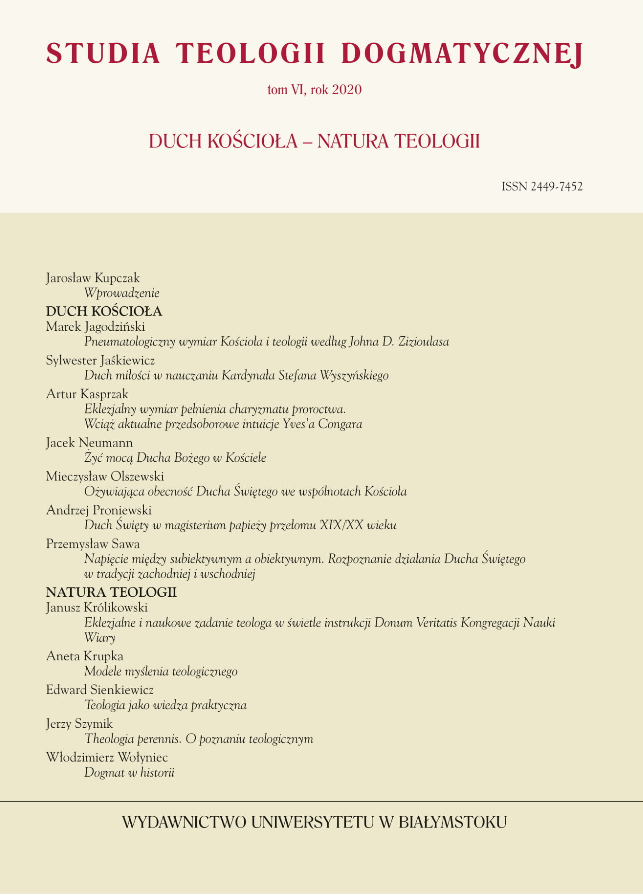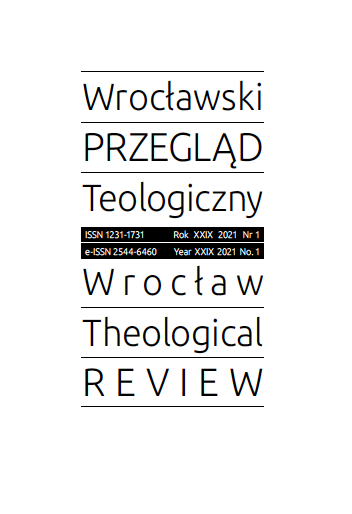
Eklezjalny wymiar pełnienia charyzmatu proroctwa. Wciąż aktualne przedsoborowe intuicje Yves’a Congara
This study examines the question of the elementary tools of discernment in the Church needed to guide the fulfilment of the prophet’s charism. The study considers the synthesis of Yves Congar’s important reflections in his book of 1950: True and False reform in the Church. The search of the French theologian refers to the analysis and finding the reasons for the division caused in the Church in the West by Martin Luther in the 16th century. We see behind Congar’s intuition that there is a risk of division in the prophetic quest to reform the Church. Only true reform in the Church can avoid it. However, an authentic reform must always be embedded in the right conditions of discernment. The issues raised by the eminent French theologian are important in terms of the dynamic pentecostalisation of Christianity, but also in the proper interpretation of the pastoral renewal directed by the current Pope Francis. The tools for discerning the authenticity of reform in the Church are still unchanged. Despite the 70 years that have passed since the publication of the book by Congar analysed here, his indicated conditions for assessing the authenticity of Church renewal are still valid.
More...
